Guest post by Sara El-Sayed.
My research explores what characterizes a regenerative food system, specifically in arid regions. Starting in the summer of 2018 I began compiling data from different thematics that were organized into MAXQDA; these included peer-reviewed papers, website articles, transcripts from semi-structured interviews, pictures from interviews, journal entries, and notes from workshops attended. The research was an inductive process of discovering what the recurring thematics that characterize a regenerative food system were. Over the course of several months of interpreting the data through using memos both free and in-text, as well as visualizing the relationships between the data, two main themes emerged. The two themes were nature-inspired design, where I borrowed principles from the field of biomimicry (Benyus, 1997), and traditional and indigenous practices, which I named traditional ecological knowledge (TEK) (Berkes ; 2008; Kimmerer, 2013).
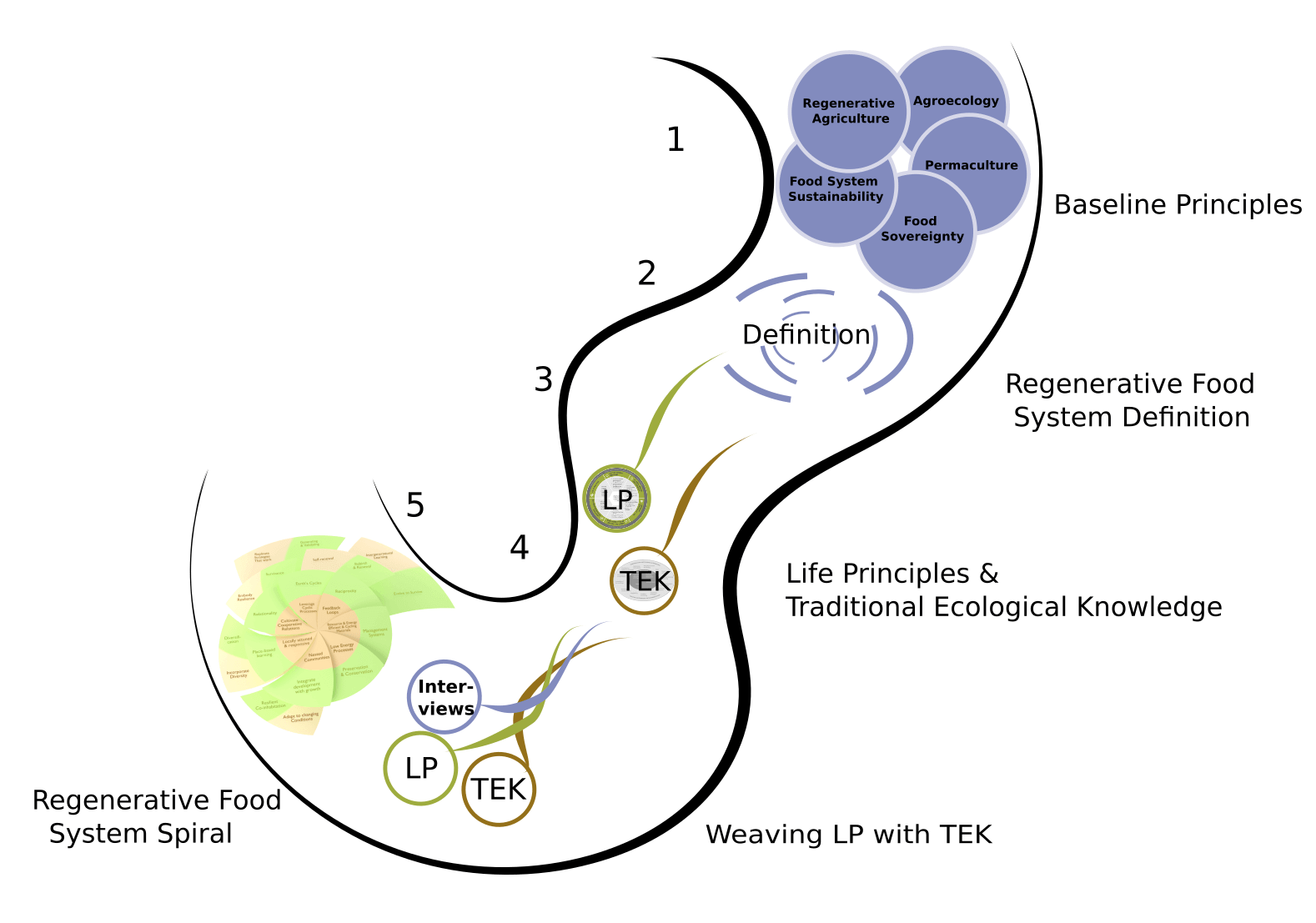 Figure 1: Process of developing the definition and characteristics of a regenerative food system.
Figure 1: Process of developing the definition and characteristics of a regenerative food system.
Data Analysis Process
The diagram above illustrates the five-step-process I developed which enabled me to arrive at principles that characterize a regenerative food system.
Step 1: Finding baseline principles from key search themes: the themes used were regenerative agriculture, permaculture, agroecology, food system sustainability, and food sovereignty. These key themes allowed me to create a definition for regenerative food systems.
Step 2: Defining a regenerative food system, building and expanding on Dahlberg’s (1993) initial characterization. My expanded definition states that
“A regenerative food system is a whole systems approach to food that: is place-based (Jackson & Jensen, 2018; Mang & Reed, 2012), integrating agroecological (Altieri, Funes-Monzote, & Petersen, 2011), and nature-inspired solutions (Rhodes, 2017), while being engaged civically and economically (Hintz, 2015; Trauger, 2017). It is a system that produces flavorful and culturally appropriate food (Fontefrancesco, 2018) that is ecologically net positive (Hes & Du Plessis, 2015; Pedersen Zari, 2018), to achieve intergenerational and interspecies justice (K. A. Dahlberg, 2009; Paxson, 2008).”
Step 3: Recognizing emerging themes: The two main themes that emerged were nature-inspired design and traditional indigenous knowledge. Biomimicry is about looking at natural models for inspiration for sustainable design principles, and uses a framework called Life Principles (LP), inspired from characteristics that are ubiquitous to all nature (Benyus, 1997). Traditional indigenous knowledge is also a large field with many frameworks used to organize its knowledge; it is sometimes referred to as indigenous knowledge of the environment or native science, or simply traditional knowledge (Cajete, 2018; Whyte, 2013). These forms of knowledge stem from traditional and indigenous ways of knowing and are passed down by oral tradition, as well as cultural expression of art, crafts, and ceremonies. It is a blend of science, spirituality, and ethics (McGregor, 2018).
Step 4: Coding and assigning themes: The themes emerged were verified in relation to interviews conducted, photos, journal entries, and notes taken from workshops and coding took place, to verify how applicable they are.
Step 5: Aligning codes into paired principles: I started with over 30 codes (see figure 2), with their code definitions from the two disciplines that were applied to all the data present. The most frequently recurring codes were highlighted, and codes that occurred together were also flagged. I then aligned codes together and identified codes in LP that matched TEK, becoming a paired principle (Figure 4). MAXQDA allows you to visualize connections between codes in its software (see figure 3)
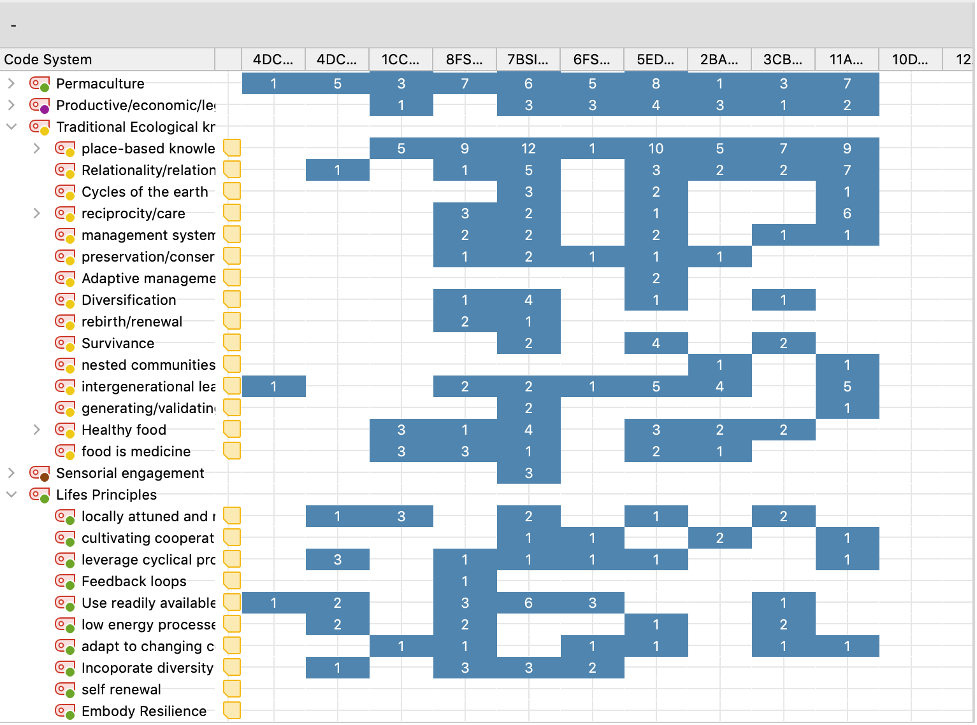 Figure 2: The Code Matrix Browser shows the occurrence of codes in my interviews.
Figure 2: The Code Matrix Browser shows the occurrence of codes in my interviews.
The Code Matrix Browser in the MAXQDA Manual
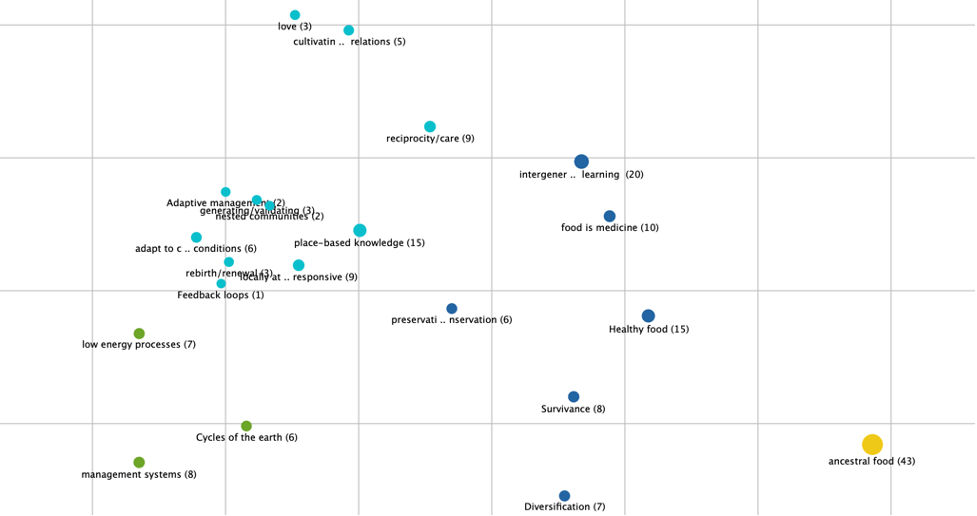 Figure 3: The Code Map enables me to see the clusters of codes together, such as love and cultivating cooperative relations or adaption, rebirth and feedback loops.
Figure 3: The Code Map enables me to see the clusters of codes together, such as love and cultivating cooperative relations or adaption, rebirth and feedback loops.
Code Maps in the MAXQDA Manual
Results and Conclusions
Using MAXQDA’s visual tools, I was able to see the codes that were more closely aligned, as is seen in figure 3. Clustering closely aligned codes led to distilling 13 principles that highlight regenerative food systems. These are principles that show commonality between LP and TEK and are represented in the diagram below in pairs, with a LP principle displayed next to its equivalent TEK principle.
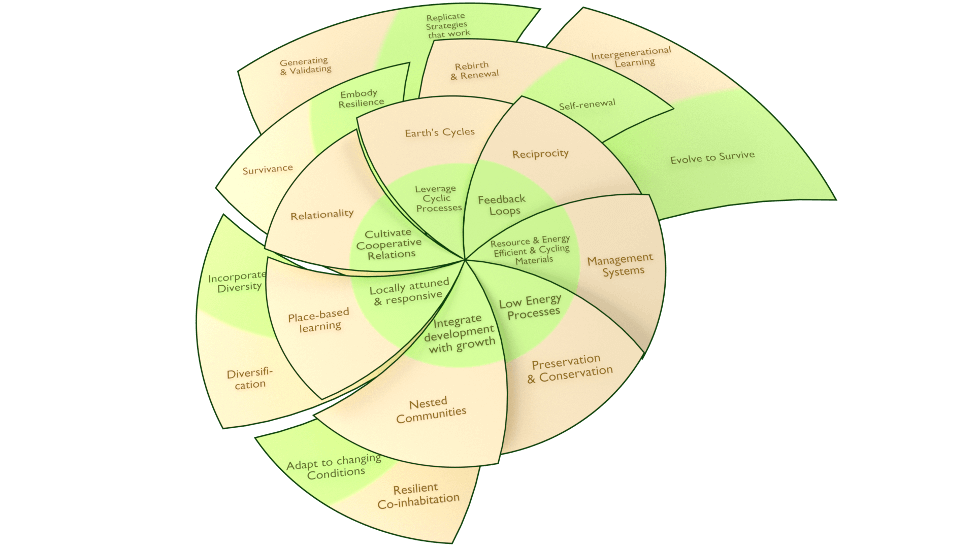 Figure 4: Diagram of spiral depicting regenerative food system framework. (Light green represents the LP principles and light brown are the TEK equivalents).
Figure 4: Diagram of spiral depicting regenerative food system framework. (Light green represents the LP principles and light brown are the TEK equivalents).
The principles highlight the importance of:
- Place-based knowledge, and local attunement, which is established through strong
- Cooperative relations, not just interpersonal relations with people, but with all of creation, that in turn supports our foods. Therefore, relations are reciprocal with non-humans and the cosmos.
- Reciprocity is about creating a feedback loop, a cycle of care, that could also be in the form of a gift or an offering.
- Such local attunement is achieved by understanding nature’s cycles and leveraging them by knowing when to grow in tune with the seasons, the cycles, and more.
- However, given this stewardship toward the earth, there is also a sense of frugal and resourceful management, utilizing resources effectively and
- Using low energy processes that preserve and conserve foods.
- Once a regenerative food system is established, growth happens slowly from the bottom up, where complex communities are nested within and benefit one another, while trading together to create a complex interdependent society.
- In turn, communities grow to become well-adapted ecosystems, known in TEK as resilient co-habitation,
- because they have diversified their diet, their growth patterns, their crops and
- Incorporate patterns of self-renewal through ritual and ceremony.
- This ultimately enables a system to be resilient or what indigenous communities call survivance: the ability to persist, with food traditions, passed through stories, songs, and rituals. As a community persists it evolves and passes this knowledge across generations, adapting to present situations with a forward outlook.
- In indigenous traditions, learning and replicating strategies that work and validating them.
- Ultimately, evolving across generations; in indigenous knowledge, this spans seven generations. A regenerative food system in this light honors small-scale and traditional practices, whilst being grounded in and adapted to teachings of the past, realities of the present, and ways to be more in tune with the future.
The results are represented in a spiral to showcase the continuous growth and evolution of this system, constantly incorporating new elements.
References
Altieri, M. A., Funes-Monzote, F. R., & Petersen, P. (2011). Agroecologically efficient agricultural systems for smallholder farmers: contributions to food sovereignty. Agronomy for Sustainable Development, 1–12. doi 10.1007/s13593-011-0065-6
Berkes, F. Traditional Knowledge Systems in Practice. In Sacred Ecology; Taylor & Francis, 2008; pp 71–96.
Cajete, G. Native Science and Sustaining Indigenous Communities. In Traditional Ecological Knowledge: Learning from Indigenous Practices for Environmental Sustainability; Cambridge University Press: UK, 2018; pp 25–26.
Dahlberg, K. A. (2009). Regenerative Food Systems: in Management of Agricultural, Forestry and Fisheries Enterprises. Encyclopedia of Life Support Systems (EOLSS), 2, 1–16. Retrieved from http://www.eolss.net/Sample-Chapters/C10/E5-15-07-05.pdf
Fontefrancesco, M. F. (2018). The Slow Food Model : A Road for Small-Scale Productions in a Globalised Market. International Journal of Agricultural Management and Development (IJAMAD), 5852, 17–23.
Hintz, C. (2015). “Soil in My Blood”: Women Farmers , Transformative Learning , and Regenerative Agriculture. Prescott College.
Hes, D., & Du Plessis, C. (2015). Designing for Hope: Pathways to regenerative sustainability. Routledge.
Jackson, W., & Jensen, R. (2018). Transforming human life on our home planet, perennially. The Ecological Citizen, 2(1), 43–46.
Mang, P., & Reed, B. (2012). Designing from place: a regenerative framework and methodology. Building Research and Information, 40(1), 23–38. https://doi.org/10.1080/09613218.2012.621341
McGregor, J. Toward a Philosophical Understanding of TEK and Ecofeminism. In Traditional Ecological Knowledge: Learning from Indigenous Methods for Environmental Sustainability; Nelson, M., Shilling, D., Eds.; Cambridge University Press: Cambridge, UK, 2018; pp 109–128.
Paxson, H. (2008). Post-Pasteurian Cultures: The Microbiopolitics of Raw-Milk cheese in the United States. Cultural Anthropology, 23(1), 15–47. doi 10.1111/j.1548-1360.2008.00002.x
Pedersen Zari, M. (2018). A shift in architectural and urban design: Cities as a medium of change. In Regenerative Urban Design and Ecosystem Biomimicry (pp. 1–15). London: Routledge.
Rhodes, C. J. (2017). The imperative for regenerative agriculture. Science Progress, 100(1), 80–129. https://doi.org/10.3184/003685017X14876775256165
Trauger, A. (2017). We want land to live: making political space for food sovereignty. Athens, Georgia: University of Georgia Press.
Whyte, K. On the Role of Traditional Ecological Knowledge as a Collaborative Concept: A Philosophical Study. Ecol. Process. 2013, 2 (7), 1–12.
About the Author
Sara Aly El-Sayed is a recipient of MAXQDA’s #ResearchForChange Grant, and a Ph.D. Candidate in Sustainability at Arizona State University, USA. Her research project titled “Honoring Regenerative Practices in Arid Regions” is currently in progress in the Southwest USA, including Hopi reservation, Ajo, Phoenix & Snowflake, Arizona.

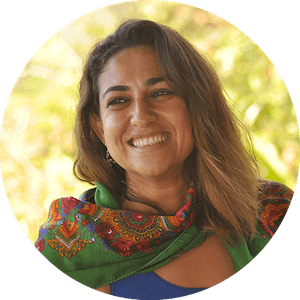 Sara Aly El-Sayed is a recipient of MAXQDA’s #ResearchForChange Grant, and a Ph.D. Candidate in Sustainability at Arizona State University, USA. Her research project titled “Honoring Regenerative Practices in Arid Regions” is currently in progress in the Southwest USA, including Hopi reservation, Ajo, Phoenix & Snowflake, Arizona.
Sara Aly El-Sayed is a recipient of MAXQDA’s #ResearchForChange Grant, and a Ph.D. Candidate in Sustainability at Arizona State University, USA. Her research project titled “Honoring Regenerative Practices in Arid Regions” is currently in progress in the Southwest USA, including Hopi reservation, Ajo, Phoenix & Snowflake, Arizona.